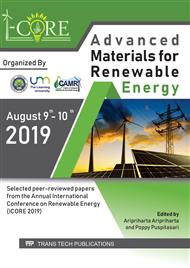p.25
p.32
p.38
p.47
p.53
p.61
p.68
p.79
p.86
Phase Identification and Mechanical Properties on Post Weld Heat Treatment of Steel St.70
Abstract:
In this era, technological advances in the field of construction and industry cannot be separated from welding, while the welding of medium carbon steel is a material that is widely applied using electric arc shielded electrodes and to obtain good results a post weld heat treatment (PWHT) process can be carried out. One of the heat treatments that can be applied to the post weld heat treatment is stress relief annealing. So in this paper a test was conducted to determine the value of ST70 hardness and steel phase from welding with stress relief temperature variations of annealing 600°C, 650°C, and 700°C in the weld metal area and heat affected zone. To find out the results of testing of the post weld heat treatment process with annealing stress relief method at temperatures of 600°C, 650°C, and 700°C in the weld metal area and heat affected zone, the tests used were microstructure, micro vickers hardness and X-Ray Diffraction. The results of the hardness test show that without the post weld heat treatment process the hardness in the heat affected zone is 311.8 HV and in the weld metal area is 329 HV. Whereas from the results of the diffraction phase analysis in the heat affected zone the development of grain size rises regularly along with the increase in temperature in the stress relief annealing process.
Info:
Periodical:
Pages:
53-60
Citation:
Online since:
July 2020
Keywords:
Price:
Сopyright:
© 2020 Trans Tech Publications Ltd. All Rights Reserved
Share:
Citation:


